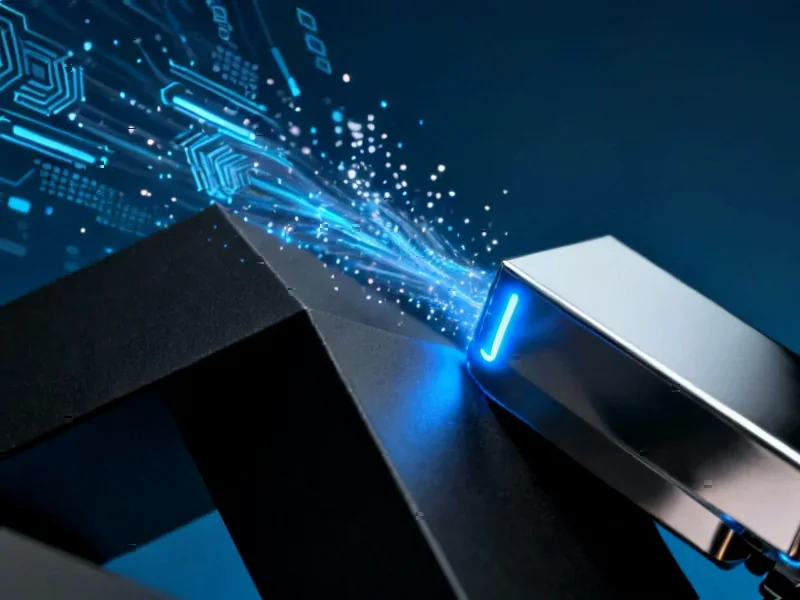The quiet revolution happening on factory floors and in industrial control rooms is becoming anything but quiet. What started as incremental automation upgrades has exploded into a full-scale AI arms race, with the industrial AI and automation market now valued at a staggering $200 billion according to recent analyses. We’re witnessing something far more significant than just another technology trend—this represents a fundamental restructuring of how global industries operate, compete, and grow.
Table of Contents
- The Numbers Don’t Lie: Explosive Growth Metrics
- Beyond Generative: The Rise of Agentic AI in Heavy Industry
- The Platform Wars: Industrial Titans Battle for AI Supremacy
- National AI Infrastructure: The Geopolitical Dimension
- Energy Sector’s AI Awakening
- The Data Center Revolution Behind the AI Boom
- Beyond the Hype: Sustainable Transformation or Another Bubble?
- The Road Ahead: Challenges and Opportunities
- Related Articles You May Find Interesting
The Numbers Don’t Lie: Explosive Growth Metrics
When Schneider Electric, one of the world’s industrial automation giants, reports a 78% growth in AI usage across organizations since 2020, you know something substantial is happening. But what’s particularly telling is the human dimension: three times as many people are using AI tools in 2025 compared to just five years ago. This isn’t just about machines talking to machines—we’re seeing human workforces rapidly adapting to AI-driven workflows.
The financial projections are equally eye-opening. Industrial AI spending is reportedly on track to reach $400 billion by 2030, growing at a compound annual rate of at least 8%. What’s driving this massive investment? Companies aren’t spending billions for marginal improvements—they’re chasing transformative efficiency gains and competitive advantages that could determine which players survive the next decade.
Beyond Generative: The Rise of Agentic AI in Heavy Industry
While everyone’s talking about generative AI, the really interesting development is happening in agentic AI—systems that don’t just respond to commands but proactively solve complex problems with minimal human intervention. Abu Dhabi’s ADNOC made waves last November when it announced a pilot program deploying agentic AI in partnership with Microsoft and AiQ. This represents a significant shift in how energy giants are approaching operational technology.
“The move from generative to agentic AI in industrial settings is like going from having a smart assistant to having an autonomous operations team,” says Dr. Elena Martinez, an industrial AI researcher I spoke with who’s been tracking this space for over a decade. “We’re talking about systems that can diagnose equipment failures, optimize production flows, and manage energy consumption without human intervention—this changes the entire economics of industrial operations.”
The Platform Wars: Industrial Titans Battle for AI Supremacy
The competitive landscape is heating up dramatically. ABB, Emerson, Honeywell, Schneider Electric, and Yokogawa are all fiercely competing in what’s becoming a multibillion-dollar market for AI-powered industrial platforms. What’s at stake? Control over the intelligent operational ecosystems that will run tomorrow’s factories, refineries, and power plants.
These aren’t just software solutions—they’re comprehensive platforms offering real-time insights, systems resilience, and throughput efficiencies that can make or break industrial operations. The competition is particularly intense because the winner won’t just sell software; they’ll establish the de facto standard for how industrial AI operates across multiple sectors.
National AI Infrastructure: The Geopolitical Dimension
Meanwhile, countries aren’t sitting on the sidelines. Denmark’s recent launch of the Gefion supercomputer—powered by 1,528 NVIDIA H100 Tensor Core GPUs—exemplifies how nations are building dedicated AI infrastructure to maintain competitive advantage. What’s notable here isn’t just the hardware, but the ecosystem approach Denmark is taking through its Danish Centre for AI Innovation.
“We’re trying to build an ecosystem of Danish companies that can both help nurture as well as avail this infrastructure,” Ali Syed, SVP of Infrastructure at DCAI, explained. This reflects a growing recognition that AI competitiveness requires both technological infrastructure and a supportive innovation ecosystem.
Energy Sector’s AI Awakening
The energy sector, traditionally slower to adopt new technologies, is now fully embracing AI. According to industry analyses, all of the world’s top 20 integrated oil and gas, power and utilities, and renewable energy companies by market capitalization now have AI strategies in place. The applications range from improved throughput at refineries to predictive maintenance at power plants and optimized flow rates from rigs to pipelines.
Christopher Hudson, president of dmgevents which organizes the massive ADIPEC energy conference, noted that AI exhibition space at their event has been constantly increasing. “We’ve always had a huge digitalization exhibition hall that has been growing for a number of years. However, of late, AI has picked up tremendously.” The dedicated AI Zone at this year’s event will occupy 3,150 square meters, up from 2,275 square meters last year—a clear indicator of accelerating interest.
The Data Center Revolution Behind the AI Boom
What often gets overlooked in discussions about industrial AI is the massive infrastructure required to support it. Sebastian Bøtcher, sales director for secure power at Schneider Electric Denmark, revealed a startling statistic: “More than 50% of datacenter growth in the past five years has been driven by AI.” This underscores how industrial AI isn’t just about software—it’s driving fundamental changes in computing infrastructure and energy management.
Schneider Electric’s role in addressing the “chip to chilling” aspect of Denmark’s Gefion supercomputer highlights how traditional industrial companies are finding new revenue streams in supporting AI infrastructure. It’s a perfect example of how the AI revolution is creating unexpected opportunities across the industrial technology stack.
Beyond the Hype: Sustainable Transformation or Another Bubble?
With any technology surge this dramatic, the inevitable question arises: is this sustainable growth or are we in another tech bubble? The evidence suggests this is fundamentally different from previous hype cycles. The 78% growth in organizational AI usage that Schneider Electric reported isn’t driven by speculation—it’s driven by measurable improvements in efficiency, throughput, and operational resilience.
What makes this AI wave different from previous industrial automation trends is the convergence of multiple technologies: IoT devices generating massive datasets, advanced AI models capable of complex reasoning, and computing infrastructure powerful enough to process everything in real-time. We’re not just automating individual tasks—we’re creating intelligent systems that can optimize entire industrial operations.
The Road Ahead: Challenges and Opportunities
The path forward isn’t without obstacles. The massive computational requirements of industrial AI systems create significant energy demands at a time when companies are under pressure to reduce their carbon footprints. There are also serious questions about workforce transformation, cybersecurity in AI-driven industrial systems, and the regulatory frameworks needed to ensure safe operation.
Yet the momentum appears unstoppable. As Dr. Nadia Carlsten, CEO of DCAI, emphasized, the ultimate objective is “the acceleration of AI research, innovation and wider collaboration that is urgently needed in this space across Europe.” The companies and countries that successfully navigate this transition will likely emerge as the industrial leaders of the coming decades, while those that hesitate risk being left behind in what’s becoming the most significant technological transformation since the industrial revolution itself.



